Sabeeha JB, Mohammed GHK, Battawi SM*, Falah SHHU, Ahmad JH and Alaa HM
Radioactive Waste Treatment and Management Directorate, Ministry of Science and Technology (M.O.S.T), Baghdad, 00964, Iraq.
Corresponding Author:
Saad Mohammed Battawi
Radioactive Waste Treatment and Management Directorate
Ministry of Science and Technology (M.O.S.T)
Baghdad, 00964, Iraq.
Tel: +96-475-06616027
E-mail: sab_salim2001@yahoo.com
Received date: June 14, 2017; Accepted date: June 22, 2017; Published date: July 07, 2017
Citation: Sabeeha JB, Mohammed GHK, Battawi SM, et al. Assessment of Gamma Dose Rate for Hypothetical Radioactive Waste Container. Int J Appl Sci Res Rev. 2017, 4:4. doi: 10.21767/2349-7238.100055
Keywords
Dose assessment; Radioactive waste; Linear attenuation coefficient
Introduction
Radioactive waste handling activities are hazardous as concern for both contamination and external exposure; therefore, strict regulations are applied for radiation protection in this field [1]. Dose rate in the vicinity of waste drum has to be kept below certain constraints throughout entire treatment and conditioning process and for the final storage; the dose rate should meet Waste Acceptance Criteria (WAC). Many experiments and tests applied to conditioned radioactive waste drum to check their purposes such as quality of encapsulation process or evaluation the attenuation of gamma activity to minimum level, also to determine and assess the dose rate for conditioned RW drums to storage or disposal [2]. Here one of the test that should be taken in RW management include cut open the package RW (cemented drum) in horizontal direction in safe-secured conditions to examine the enteric of the cemented RW drum and for gamma attenuation determination (shielding function), the cemented bulk will be head to gamma-ray detector or dose rate device and will be taken in contact to the outer side of the drum for quality and safety assessment. In such tests, risks of highly contamination and exposure will be high (radioactive waste dust dispersed in environment). In the absence of controlled lab for such test; hypothetical system present in this work; using metallic waste free of contamination having conditioning process with cementation technique and 137Cs gamma point source was used. The container consists of 15-20% free metallic waste and 80-85% of encapsulation material. This drum waste cut open to get two halves piece of cement–waste bulk as in Figure 1. One of the half was cut vertically to get one waste cemented sample to be headed to 137Cs gamma source pointed in many places across the diameter of the sample (R) and dose rate detection held in contact to the bulk outer surface using dosimeter device. This estimation method was necessary in absence of suitable labs for cemented waste as sample test while in waste management activities are very costly and thus the (hypothetic) tests could incorporate as much activity as possible to optimize these cots. In addition, many studies could be followed in this field for labs poor in Rad waste drums characterization. The estimation of gamma dose for homogenous waste containers are widely field because of variety of radioactive waste materials for each country and with variety of their activities [3].
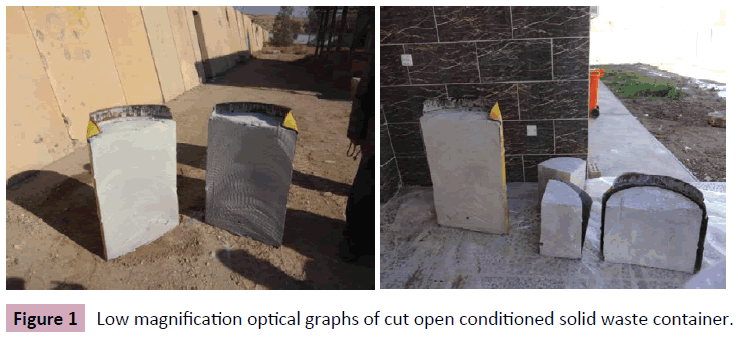
Figure 1: Low magnification optical graphs of cut open conditioned solid waste container.
Methods
To achieve the objectives of the present study, Iraq Portland cement and additives are prepared and mixed in certain ratios as Tables 1 and 2 show the specification of cementation matrix ratios while Table 3 represent the chemical analysis of container alloy components that used in the waste management facility.
| Water/cement ratio: 0.5 |
| • Fly ash/cement ratio: 0.3 |
| • Additives: SP703, 1 L/100 kg cement |
| • Time of mixing: 30 min |
| Density of cement matrix: 1.675 g/m3 |
| • Compressive strength: 22 N/mm2 |
Table 1: Specification of preliminary mix design.
| Components |
CaO |
SiO2 |
Al2O3 |
Fe2O3 |
MgO |
SO3 |
K2O and Na2O |
| Mass content (percent) |
58-66 |
18-66 |
4-12 |
1-6 |
1-3 |
0.5-2.5 |
1 |
Table 2: Mass components for Portland cement.
| Element |
Fe |
Mn |
Ni |
Cr |
Cu |
Zn |
Mg |
Al |
Mo |
| Concentration |
96% |
0.11% |
42 ppm |
0.02% |
65 ppm |
68 ppm |
10 ppm |
288 ppm |
0.21ppm |
Table 3: The chemical analysis of container waste alloy using AAS technique.
The cement matrix and additives was mixed for 30 min, which were considering enough to achieve good homogeneity. The mixture density (ρ) about 1.675 g/cm3 dropped into the drum where the clean solid waste was collected in iron basket and centered in the container and left for few moment on the vibrate stage to let gas bubbles escaped from the surface. The sample left for 28 days where the solidification of the cement-waste mixture is completed. Figure 1 show conditioned free waste package after cutting process using electrical machine to get half shape pieces. For gamma dose rate validation, a sample of half-half package waste form was prepared and head to 137Cs gamma source to assumed the waste has been exposed to such gamma radiation rays from many distance (R) along the bulk diameter and that head to different thickness (x) or depth has gamma radiation penetrate through cement matrix shield and reach the detector window. The detection system was dose meter of (NaI) crystal type Ludlum held device with 40% efficiency of gamma-ray 0.661 Mev, background with 9 μR/h and used at contact with the outer side of waste package. Dose rate measurement and apparatus design in Figure 2, which represents schematic representation of method design.
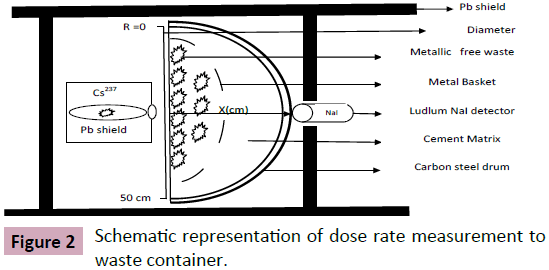
Figure 2: Schematic representation of dose rate measurement to waste container.
Results
The well-known photon linear attenuation coefficient (μ) or shielding equation may be calculated using equation below:

Where Aæ the incident gamma-ray activity and Dº dose rate, which obtained without inserting any sample between the detector and the source and A, D, when the incident photons obtained for the cement waste bulk of thickness (x). The attenuation coefficient μ could be calculated in terms of dose rate and activity terms using narrow collimated mono-energetic beam of 137Cs gamma source. The linear attenuation coefficient μ assumed to be obtained by the following formula:

The dose rates and attenuation coefficient μ were performed for cemented waste cross section along diameter (R) in relative to their thickness (x). While μ depend on density of absorber material and cross sections of gamma-ray reactions with absorber material readings show ratios of errors as was expected. By assume equation (2) is valid since the photons in the incident beam are mono-energetic and the beam are narrow [4,5], so for simplicity of the test, build up factor or the mean free path of photons travels were not considered in calculation showed in Tables 3 and 4. From dose rates measurement, activity values were obtained using computer program RadPro 3.2 calculator version 3.24 (2009). The results show in Tables 3 and 4 are displayed in Figures 3-6 for 137Cs gamma source, it can be seen the linear attenuation increased with cement-waste thickness. The plots in Figures 5 and 6 show the responding relation between the final dose rate of cemented waste bulk and the depth shield along the R axis of the sample for 662 KeV gamma energy [6,7]. The dose rate of the 137Cs contained by cemented waste and carbon steel container specimen was dropped to very low values, which are within Waste Acceptance Criteria (WAC) [8]. Figure 3 show discrepancies in the results, which are mainly due to internal in homogeneity of the waste form, which can alter the dose rate measurement results, it is to be noted that the main hypothesis of this estimation is the homogeneity of the waste form content and the uniformity of the activity distribution. By comparing the dose rate results, which attenuated by the cement matrix thickness and path length of gamma-ray are with the (WAC) for storage or transport seems acceptable and the conditioning mixture showed a very good suitability and efficiency for solid (liquid) radioactive waste management (Figures 5 and 7; Table 5) [9].
| 137Cs Position (R) ( cm) |
(Dº) (µSv/h) |
(D) (µSv/h) |
Thickness of Cemented Waste body (x) (cm) |
ln (Dº/D) |
µ (cm-1) |
| 5 |
26.4 |
7.62 |
19.5 |
1.24 |
0.063 |
| 10 |
20 |
4.86 |
24 |
1.41 |
0.058 |
| 15 |
18.1 |
3.30 |
24.5 |
1.70 |
0.069 |
| 20 |
16.9 |
3.21 |
26.5 |
1.66 |
0.062 |
| 25 |
15.9 |
3.26 |
28.5 |
1.58 |
0.055 |
| 30 |
15 |
3.11 |
29.5 |
1.57 |
0.053 |
| 35 |
15.9 |
3.23 |
28.5 |
1.59 |
0.055 |
| 40 |
16.9 |
3.76 |
26.5 |
1.50 |
0.056 |
| 45 |
18.1 |
4.58 |
24.5 |
1.37 |
0.056 |
| 50 |
20 |
5.80 |
24 |
1.23 |
0.051 |
| 52 |
26.4 |
7.55 |
19.5 |
1.25 |
0.064 |
Table 4: Dose rate measurements and calculated of linear attenuation coefficient (μ) in terms of dose rate.
| 137Cs Position R (cm) |
(A1) (Bq) |
(A2) (Bq) |
Depth (cm) |
Ln (A1/A2) |
µ (cm-1) |
| 5 |
1.31E+07 |
3.79E+06 |
19.5 |
1.24E+00 |
6.37E-02 |
| 10 |
1.51E+07 |
3.67E+06 |
24 |
1.41E+00 |
5.89E-02 |
| 15 |
1.42E+07 |
2.59E+06 |
24.5 |
1.70E+00 |
6.95E-02 |
| 20 |
1.55E+07 |
2.95E+06 |
26.5 |
1.66E+00 |
6.27E-02 |
| 25 |
1.69E+07 |
3.47E+06 |
28.5 |
1.58E+00 |
5.56E-02 |
| 30 |
1.65E+07 |
3.44E+06 |
29.5 |
1.57E+00 |
5.32E-02 |
| 35 |
1.69E+07 |
3.44E+06 |
28.5 |
1.59E+00 |
5.59E-02 |
| 40 |
1.55E+07 |
3.46E+06 |
26.5 |
1.50E+00 |
5.67E-02 |
| 45 |
1.42E+07 |
3.60E+06 |
24.5 |
1.37E+00 |
5.61E-02 |
| 50 |
1.51E+07 |
4.38E+06 |
24 |
1.24E+00 |
5.16E-02 |
| 52 |
1.31E+07 |
3.76E+06 |
19.5 |
1.25E+00 |
6.42E-02 |
Table 5: Calculated of linear attenuation coefficient (μ) in Activity terms (A).
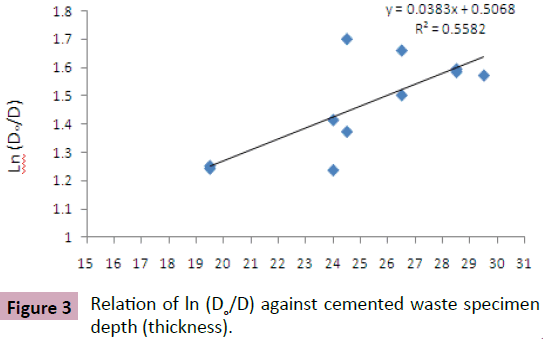
Figure 3: Relation of ln (Dº/D) against cemented waste specimen depth (thickness).
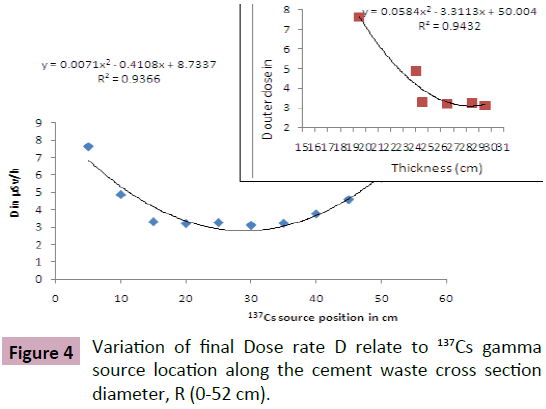
Figure 4: Variation of final Dose rate D relate to 137Cs gamma source location along the cement waste cross section diameter, R (0-52 cm).
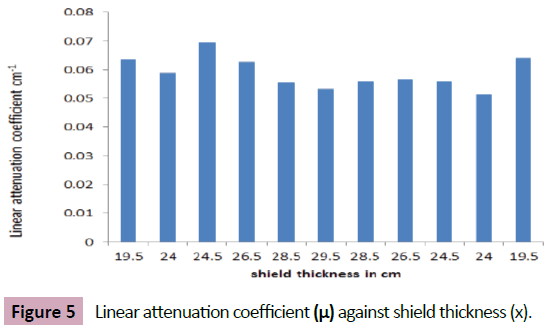
Figure 5: Linear attenuation coefficient (μ) against shield thickness (x).
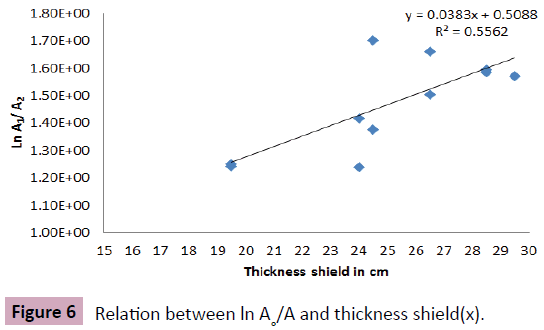
Figure 6: Relation between ln Aº/A and thickness shield(x).
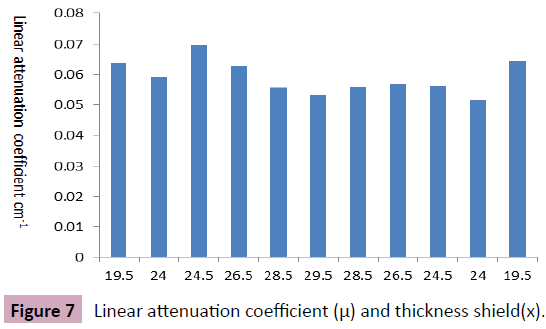
Figure 7: Linear attenuation coefficient (μ) and thickness shield(x).
Discussion and Conclusion
1. During this study, characterization of radioactive waste containers for low and intermediate level waste was implemented.
2. The maximum linear attenuation coefficient in terms of dose rate or activity were attained for cement matrix ratios incorporate with iron basket for 15-20 % waste, 80- 85% cement matrix for 137Cs gamma source of initial dose 15 μSv/h was 0.053 1/cm.
3. The minimum dose rate values was in contact of waste container bulk exposed to 137Cs gamma source was (3.11 μSv/h) and the maximum dose values was (7.62 μSv/h) related to the thickness of the penetration depth of the gamma radiation 29.5 and 19.5 cm.
4. The results proved that the cementation matrix (ratios) and the iron basket with the carbon steel container metals have an impact on attenuation performance of gamma radiation beside the bulk density and porosity level of the solidified cement-waste mix.
5. Substantial improvement of about (28.86 and 20.73%) in attenuation performance in term of dose rate ratios at R (5 and 30) cm for initial dose rate D∘ (26.4 and 15 μSv/h) in air of cement waste sample depth was attained for solid waste and using Iraqi Portland cement local product.
6. Solid waste conditioning and treatment utilized successfully due to the structure of open cut cross section of cement waste bulk.
References
- International Atomic Energy Agency (2008) The management system for the processing, handling, and storage of radioactive waste. Safety Guide, No. GSG3.3, IAEA, Vienna.
- International Atomic Energy Agency (2006) Storage of radioactive waste. Safety guide, No. WS-G-6.1, IAEA, Vienna.
- Dulama CN, Dulama M, Dobrin R, Pavelescu M (2011) Estimation of the gamma dose rate for homogenous waste containers. Rom J Phys 56: 1136-1142.
- Dobrin RI, Dulama CN, Toma AL (2004) Shell source method in radwaste assay. Rom J Phys 49: 517-521.
- Basdevant J, Rich J, Spiro M (2005) Fundamentals in nuclear physics. Springer Science+Business Media, Inc., NY, USA.
- Maheemeed AK, Hasan HI, AL-Jomaily FM (2012) Gamma-ray absorption using rubber-lead mixtures as radiation protection shields. J Radionanal Nucl Chem 291: 653-659.
- Mostofinejad D, Reisi M, Shirani A (2012) Mix design effective parameters on γ-ray attenuation coefficient and strength of normal and heavy weight concrete. Construction and Building Materials 28: 224-229.
- Treatment Center for Radioactive Waste (2007) NUKEM technology GmbH.
- International Atomic Energy Agency (1992) Treatment and conditioning of radioactive organic liquids. IAEA-TECDOC-656: 38.










